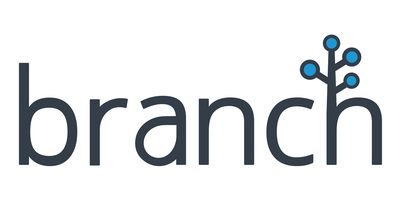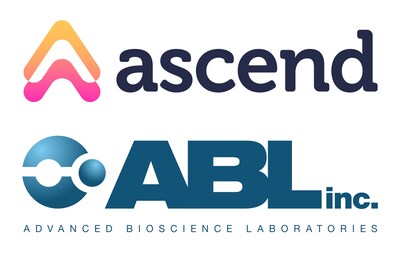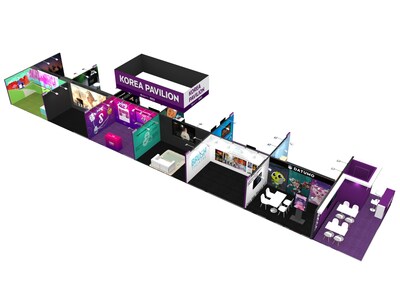PALMA DE MALLORCA, Spain, March 5, 2025 /PRNewswire/ — Laminar Pharma, a leader in the development of innovative cancer therapy based on membrane lipid therapy, announced today optimistic results from its ongoing clinical trial evaluating LAM561 for the treatment of newly diagnosed glioblastoma (ndGBM), the most aggressive form of brain cancer, that has seen limited clinical improvement in the last 20 years. The trial, partially funded with an EU H2020 Grant (ClinGlio), has shown an improvement trend in progression-free survival (PFS) in MGMT-methylated patients receiving LAM561 in combination with chemoradiotherapy (radiotherapy plus temozolomide) as the standard of care (SoC) compared to placebo plus SoC treatment. LAM561 is available for in-license for all territories. Laminar’s current fund raising round is still open, for a limited time, to additional investors.
The pivotal phase 2b/3 trial, “A randomized, double-blind, placebo-controlled adjuvant trial in newly diagnosed primary glioblastoma subjects to assess the efficacy and safety of LAM561 in combination with radiotherapy and temozolomide standard of care treatment” (NCT04250922), enrolled 144 patients with newly diagnosed glioblastoma. In November 2024, After reaching 66 PFS events the independent data monitoring committee (IDMC) recommended: (1) Continue the trial without modifications until 90 OS events (overall survival), when the final analysis will be carried out, estimated for Q4 2026; (2) that the trial should not be stopped for reasons of safety or futility and (3) opening the study, that is, removing the blind. From that moment, patients, doctors and Laminar as sponsor are able to know if any patient received placebo or LAM561.
Although the main primary outcome of the interim analysis (Hazard Ratio of 0.5 for PFS) was not reached for the whole trial population, the unblinding of the trial has allowed Laminar to conduct an ongoing evaluation (non-statistically assessed and with data under monitoring review) considering the per protocol predefined stratification: methylation status of the MGMT promoter and RTOG score (3, 4 or 5), a scale describing the side effects caused by radiation therapy and the higher the RTOG score the worse the clinical position. By revising the data stratified by MGMT promoter methylation status and RTOG, and using data available on 18th February 2025, the median PFS for methylated patients RTOG3 was 56,7 weeks on the LAM561 treatment arm against 19 weeks on the placebo arm (n=9). Moreover, the median PFS for methylated patients RTOG4 was 86,4 weeks on the LAM561 treatment arm against 54,7 weeks on the placebo arm (n=39). With currently available data, methylated patients treated with LAM561 + SoC seem to experience a potentially clinically relevantimprovement in PFS (Hazard-ratio estimation of 0.53) compared to control group (placebo+SoC). PFS was not improved by LAM561 in unmethylated patients. This interim perspective should be taken with caution since the study is still ongoing and providing new information and the final interpretation will only be apparent once the study has completed after reaching 90 OS events; and, although progression of the disease is a relevant clinical event, overall survival is the primary outcome of the trial and conclusions on the final effect of the drug need to wait until the final analysis is performed and data is reviewed by the IDMC. Laminar intends to perform an in-depth independent objective assessment of the findings.
The methylation status of the MGMT promoter is highly relevant in the prognosis of glioblastoma [Leske et al., 2023]. MGMT-methylated patients represent 35-50% of the total glioblastoma patients.
“We are encouraged by the progression-free survival results from this trial in MGMT-methylated patients, which, if reflected by positive overall survival results, may represent a significant advance in the treatment of glioblastoma, a condition with poor prognosis that affects more than 100,000 people every year”, said Dr. Pablo Escribà, CEO of Laminar Pharma. “Glioblastoma remains one of the most challenging cancers to treat, and these findings highlight the potential of LAM561 to improve outcomes for methylated patients, a considerable portion of the total glioblastoma population. Our team is committed to continuing the development of this promising therapy.”
The combination of LAM561 and SoC was well-tolerated. The safety data in the trial is consistent with the known safety profile of LAM561 studied in previous clinical trials, with no new safety signals observed in the combination arm.
Trial Details and Key Findings:
- The study enrolled 144 patients with newly diagnosed, IDH-wildtype, glioblastoma.
- MGMT-methylated patients treated with LAM561 and SoC currently show a trend towards longer progression-free survival (86,4 weeks) compared to placebo control SoC group (54,7 weeks, HR 0.53). The study will continue until 90 OS events when final analysis will be conducted, estimated by late 2026.
- Safety data showed that the treatment was well-tolerated, with adverse events consistent with previous trials and a well-known safety profile.
These results built on earlier preclinical and clinical data, which indicated that LAM561 could effectively target, through modification of the membrane lipid, the molecular pathways associated with glioblastoma growth. Further analysis and longer follow-up periods are underway to assess overall survival and other secondary endpoints.
About Glioblastoma: Glioblastoma (GBM) is the most common primary malignant brain tumor and accounts for nearly 50 percent of all gliomas and approximately 25 percent of all primary brain and CNS malignant tumors. The incidence of GBM in Europe is currently above 25,000 new cases each year, rising to over 100,000 cases per year worldwide. The prognosis for GBM patients is very poor, with a median survival time of about 14.5 months despite optimum chemo-radiation treatment. About 15% of patients survive two years after diagnosis and ca. 4% survive for five or more years. In this scenario, there is a desperate need for novel treatment alternatives that provide safe and more efficacious clinical outcomes.
About LAM561: LAM561 (2-hydroxyoleic acid (2-OHOA); idroxioleic acid, sodium) is a synthetic derivative of oleic acid and the most advanced Laminar’s R&D product which is taken orally. This drug alters the composition of the plasma membrane in cancer cells, reducing the activity of membrane-associated signaling proteins that are known to promote tumor growth and affecting tumors in the brain. LAM561 is in the process of completing its last clinical development phase and has shown promising preliminary clinical activity in the treatment of aggressive brain tumors, glioblastoma.
About Laminar Pharma: Laminar Pharmaceuticals S.A. (Laminar) is a Spanish biotechnological company created in 2006, committed to translational health research, for the rational design and development of drugs to treat oncological and other pathologies in the form of synthetic fatty acids considered “First-in-class Health Solutions” and based on a novel technology, the Melitherapy (MLT or Membrane Lipid Therapy). Laminar controls all the processes, from the rational design of the molecules to the clinical trials that lead to the launch of a new drug, with constant investment in R&D and high-quality standards. It is currently headquartered in Mallorca (Spain) with a subsidiary in Massachusetts (USA).
The development and commercialization of medicines involves a high degree of risk, and only a small number of research and development programs result in the commercialization of a product. This document contains forward-looking statements. These statements do not relate strictly to historical or current facts and may be accompanied by words such as “anticipate,” “believe,” “conceivably” , “could,” “estimate,” “expect,” “may”, “potential,” “possible,” “will,” and other words of similar meaning. The results of clinical trials may not be indicative of the full results or the results of later-stage clinical trials and do not guarantee regulatory approval.
Media Contact:
Javier Fernández Díaz
j.fernandez@laminarpharma.com
References:
Leske, H., Camenisch Gross, U., Hofer, S., Neidert, M. C., Leske, S., Weller, M., … & Rushing, E. J. (2023). MGMT methylation pattern of long-term and short-term survivors of glioblastoma reveals CpGs of the enhancer region to be of high prognostic value. Acta Neuropathologica Communications, 11(1), 139








